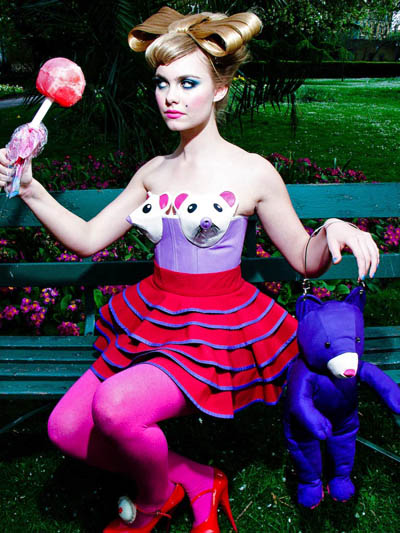
In Gustave Flaubert’s classic tale Madame Bovary, Emma racks up debt from her excessive designer purchases. Fast-forward 150 years later and Winona Ryder is caught shoplifting over $5,500 worth of designer clothes from Sax Fifth Avenue. Thankfully Target has stepped in to help the sybarites among us with impulse-shopping problems and developed Go International, a line that features high-end designer pieces at a mass market price. Zac Posen, who created pieces such as floral brocade frocks, is the latest designer to debut his clothes at the discount retailer.
Known as one of the IT boys in the elite world of fashion, Zac Posen is following many other young, emerging designers such as Proenza Schouler, Alice Temperley, and Rodarte and throwing his hat into Target’s arena of mass market fashion. Posen’s line will feature pieces ranging from $16.99-199.00 according to the Target website.
But can Posen, whose average dress retails for about $1000.00, translate his signature aesthetic at such a low price point without comprising quality or stylistic integrity?
Roberta Elins, a professor at the Fashion Institute of Technology in New York, says that Target’s mass market lines do a good job at delivering well designed clothes at a lower price point. But she adds that it is illogical to think that the quality will be comparable to a designer’s original luxury line.
“That’s like saying couture can translate into regular, ready-to-wear,” Elins states. “There are high-end yachts and than there are weekend sailboats,” she says, making an analogy between boats and a designer’s luxury and mass market line. Both models can perform the same basic function, originate from the same brand and possess similar design, yet in terms of quality one will always have a larger cabin or more hand ruched detailing than the other.
So if you can’t afford the yacht should you even bother shelling out for the weekend sailboat?
Posen, despite price limitations, did stay true to his vision and parallels can definitely be drawn between his runway collection and Go International line. Yet whether this is a positive for the average Northwestern student will be dependent on what exactly the student is looking for.
Accustomed to designing for socialites and celebrities, Posen’s line for Target consists mostly of dresses and party-wear. From a bright red dress with tulle and ruffles that looks like a modernized version of a Molly Ringwald outfit in a John Hughes’ movie, to a bodycon cocktail dress, these items are not the average pieces you see down Sheridan Road.
This quality is seen as a plus for many college students who see these lines as a great opportunity to acquire pieces they may not normally be able to afford from a well-known designer. Yet as Elins points out, it is not necessarily the only or the most economical way to attain unconventional or branded items.
College students, who Elins says are a crucial demographic of these Target lines, have many options of recessionista dressing depending on their geographical location. Posen’s and other mass market lines may not be viewed as the messiah of cheap chic in a city like Chicago where there is an abundance of vintage stores that offer stylish clothes at an affordable price.
Elins says that most smart college shoppers will chose a combination of mass market purchases and vintage finds. She adds that lines like Go International may be more appealing to a more conservative shopper, who can see a look put together and stylized on a mannequin.
Paula Kim a social worker who is a shopper of the Evanston Target says she usually looks at the Go International lines but does not necessarily buy anything.
“The items are all very cute” Kim says while clutching a structured tuxedo skirt with an exposed zipper. “But the sizes are way too small, I feel like a giant when trying things on.“
This is a common complaint among Target customers, who on the review section of Target’s website often state to size up when purchasing items.
With pieces like a silky floor length print gown featuring intricate construction at the bodice and a red leather jacket that looks like it’s circa Studio 54, it seems that Zac Posen’s line may be the perfect distraction from pulling your own Winona.
-Heba Hasan











